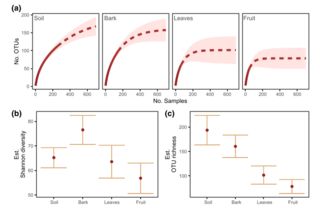Substrate, temperature, and geographical patterns among nearly 2,000 natural yeast isolates
W.J. Spurley et al. "Substrate, temperature, and geographical patterns among nearly 2,000 natural yeast isolates" Yeast (2021) [DOI:10.1002/yea.3679]
Yeasts have broad importance as industrially and clinically relevant microbes and as powerful models for fundamental research, but we are only beginning to understand the roles yeasts play in natural ecosystems. Yeast ecology is often more difficult to study compared to other, more abundant microbes, but growing collections of natural yeast isolates are beginning to shed light on fundamental ecological questions. Here, we used environmental sampling and isolation to assemble a dataset of 1962 isolates collected from throughout the contiguous United States of America (USA) and Alaska, which were then used to uncover geographic patterns, along with substrate and temperature associations among yeast taxa. We found some taxa, including the common yeasts Torulaspora delbrueckii and Saccharomyces paradoxus, to be repeatedly isolated from multiple sampled regions of the USA, and we classify these as broadly distributed cosmopolitan yeasts. A number of yeast taxon–substrate associations were identified, some of which were novel and some of which support previously reported associations. Further, we found a strong effect of isolation temperature on the phyla of yeasts recovered, as well as for many species. We speculate that substrate and isolation temperature associations reflect the ecological diversity of and niche partitioning by yeast taxa.
The R code for analyses for which custom scripts were written is on GitHub. ITS sequences for 1905 isolates are available on GenBank under accession numbers OK050592– OK052496. All supporting information materials are provided in a Figshare repository.
